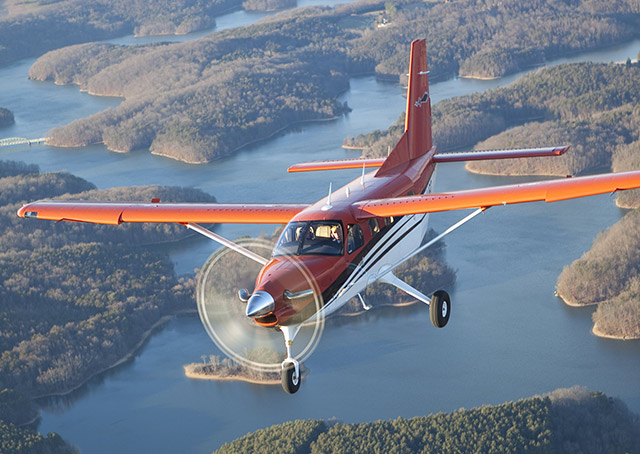Quick Look: Quest Kodiak
This rugged turbine single hauls huge loads off tiny runways

Originally designed as a go-anywhere aircraft to allow missionary and humanitarian organizations to reach remote and inhospitable areas, the boxy Quest Kodiak is a roomy load hauler with a jaw-dropping 3,500-pound useful load and excellent short/rough-field capabilities. It has a tall, rugged landing gear and 19 inches of propeller ground clearance. And because it’s powered by a turbine, there are no issues with finding avgas in countries where it’s increasingly scarce.
Like all turbines, the fuel burn down low is significant, so on longer trips plan to get up high, where the turbine can more easily pull the draggy airframe through the thinner air. The Kodiak is unpressurized, however, so many operators will limit flights to 12,000 feet msl. At that altitude, you can get 174 KTAS on 335 pounds per hour or 50 gph. For max range, strap on the oxygen mask, climb to FL250, dial the propeller back to 2,000 rpm, and you can muster 143 KTAS on 200 pounds per hour or 30 gph—and fly more than 1,000 nautical miles.
For runway work, the Kodiak stalls at a low 45 to 50 KIAS. It has large, effective Fowler flaps. Because of the flaps’ effectiveness, there’s an auto-trim function to reduce the pitch changes required during flap deployment and retraction. Most takeoffs use less than 1,000 feet of runway, except when loaded up at high elevations and temperature. Climb rate at max takeoff weight is 1,350 fpm at sea level at a speed of 88 KIAS. At lighter weights, the Kodiak climbs more like an elevator. Landings also require little runway, thanks to the availability of beta thrust.
Up front, the cockpit seats are located ahead of the wing, so visibility is excellent. Forward visibility is somewhat compromised by the high instrument panel and long nose. There is also exhaust-heat visual distortion to the sides, because of the exhaust stacks located on each side of the engine cowling. Handling is very much like a Cessna 206, and the noise level is also high like a piston single’s, measuring 92 dBA. Vibration, however, is much less, thanks to the turbine.
One operator says his only issues have been short battery life and poor placement of the ground power unit receptacle. This operator was only getting about a year out of the dual batteries. Using a GPU is an unattractive option because the access plug is just aft of and below the left exhaust stack—expect a face full of hot PT6 exhaust. It’s also pretty close to the propeller. Using trickle chargers when on the ground, the operator has milked 18 months to two years service from his batteries. In 2,000 hours over 5.5 years of service, the Kodiak has been otherwise “bulletproof” for his operation.
The Cessna Caravan provides the Kodiak with plenty of competition. Although it, too, is a huge turboprop single capable of hauling big loads, the Caravan’s wing design is not as effective at hauling huge loads off tiny airstrips.
Pete Bedell is a pilot for a major airline and co-owner of a Cessna 172 and Beechcraft Baron D55.
SPEC SHEET
Quest Kodiak
Powerplant | 750-shp Pratt & Whitney PT6A-34
Length | 34 ft 2 in
Height | 15 ft 3 in
Wingspan | 45 ft 0 in
Seats | 1+9
Max takeoff weight | 7,255 lb
Takeoff distance over 50-ft obstacle | 1,500 ft
Max cruise speed | 174 kt
Landing distance over 50-ft obstacle | 970 ft
Range | 1,000 nm


